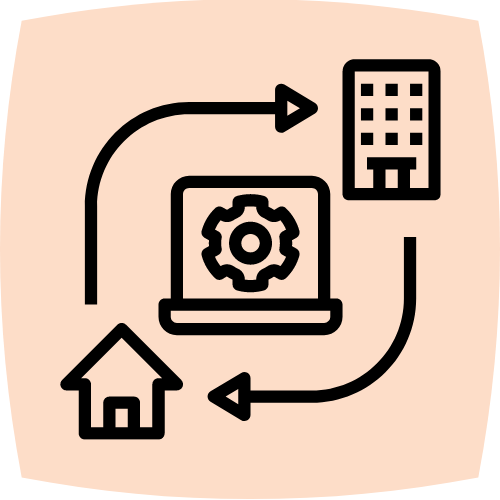Like many instructors, I always have the best of intentions for my summers. (And like many instructors, I tend to not actually accomplish much over the summer, but that’s a topic for another post.) A couple summers ago, my colleague and I decided to use our time between the spring and fall semesters to revise the weekly curriculum of Educational Technology, the undergraduate course that we teach to pre-service teachers. We walked through the course week by week and updated our resources and activities. This exercise strengthened our course by ensuring the alignment of all materials to our course goals and the timeliness of all outside resources.
This exercise also showed me just how much I rely on supplemental resources in my class. Supplemental resources are truly the unsung heroes of education.
Okay, that’s a little dramatic, but they are an important aspect of teaching, and they can be utilized to support and enhance courses in any modality. I recently wrote about how supplemental resources can:
- Engage students with the power of choice,
- Empower students to explore their interests,
- Elevate struggling students with additional support, and
- Extend high-achieving students to new heights.
Now, let’s talk about how we can do all of those things in face-to-face, online, and hybrid courses.

Face-to-Face
Face-to-face, synchronous in-person, in the classroom, whichever of the hundred terms you choose, this is what is generally considered a traditional classroom. When you talk about education, people imagine a classroom with a chalk/white/smart board in front of rows or groups of students. As I’m always talking about digital supplemental resources, the face-to-face classroom has the potential to be left out of the conversation, but they can have just as much of an impact in a face-to-face setting as any of the other possible modalities.
 Allowing students to choose their topic for an assignment or project is the easiest and best way to empower students to explore their own interests in any course modality. If they need to demonstrate their ability to write a research paper, let them pick their research topic. If they need to demonstrate their understanding of genetics in mammals, let them pick their favorite animal. As long as the assignment still aligns to the course objective, let them make choices to connect the learning to their own interests. Supplemental resources make it possible for 30 students to focus on 30 different topics, even when those topics extend beyond the course textbook. A list of starting-point resources can serve as the topic options for a project (because I always say infinite choice is the same as no choice at all!).
Allowing students to choose their topic for an assignment or project is the easiest and best way to empower students to explore their own interests in any course modality. If they need to demonstrate their ability to write a research paper, let them pick their research topic. If they need to demonstrate their understanding of genetics in mammals, let them pick their favorite animal. As long as the assignment still aligns to the course objective, let them make choices to connect the learning to their own interests. Supplemental resources make it possible for 30 students to focus on 30 different topics, even when those topics extend beyond the course textbook. A list of starting-point resources can serve as the topic options for a project (because I always say infinite choice is the same as no choice at all!).
I’m also a huge fan of choice board assignments where students complete their choice of tasks from a board of options, each of which can be a different supplemental resource. Face-to-face classes have the unique ability to do something similar with classroom stations. Set up several stations in the classroom, each with a different resource, and allow students to choose the stations they want to complete. They can all revolve around the same topic or skill, allowing all students to meet the course objectives in whichever way they choose. To go back to the animal genetics example, each station could contain supplemental resources about a different animal. This can also provide a great opportunity for students to explore new interests! Supporting struggling students is as easy as directing them to the specific stations that they need. Need to extend high-achieving students to new heights? Allow them to design a station!
One of my favorite teaching strategies is the flipped-classroom model (I even wrote about Why I Love the Flipped-Classroom Model). Flipping a class moves the lecture outside of the class and allows you to spend class time on hands-on active learning. Supplemental resources are the fuel that makes flipped classrooms work; they are the resources that students explore and learn from before they come to class to put them into practice. Supplemental resources in a flipped classroom can include resources targeted to support areas where students are struggling and resources designed to extend high-achieving students.

Online
Thanks at least in part to the global pandemic of 2020, everyone is now familiar with online learning. I’ll refrain from going into a full rant on the differences between the emergency remote teaching that we saw in 2020 and true planned online learning, and simply say that, for the purpose of this blog, I’m talking about true planned online learning. In its simplest definition, online learning is when the instructor and the students are not in the same place. We can further break this down into synchronous online learning with live Zoom-style classes and asynchronous online learning without any live meetings. These may include recorded lectures and online discussion boards instead of the synchronous meetings.
Just like in a face-to-face course, allowing students the freedom of choice is a powerful way to use supplemental resources. Allow them to choose their topics, allow them to choose the resources they wish to explore, and allow them to choose how to consume information.
For any courses that utilize a learning management system (LMS) like Canvas or Blackboard, supplemental resources can be embedded in that online LMS. I like to have a folder in the course that is filled with just optional supplemental resources. Sort them by topic or week and give students the option to explore those resources to dive deeper into the content. Some LMSs even have features such as Canvas’ Mastery Paths that allow you to set up different learning paths for students. They can be set up so that certain resources appear only for students who score below a certain threshold on an assignment, so that they can focus more time on areas where they struggled and less where they excelled. Based on score or choice, it’s a great way to give students different sets of resources tailored to their needs and interests.
Courses that utilize an online component can also benefit from discussion boards in the LMS. Task students with finding their own supplemental resources related to the topic, and share them on the discussion board. They can then explore the resources their peers share and learn from each other’s interests.

Hybrid
And then we have hybrid classes. I’m personally a big fan of the hybrid course modality because I love the connections that can be made in a face-to-face environment and the depth of learning that can occur in online environments. There are nuanced differences between blended learning, hybrid learning, web-enhanced learning, and probably a few other terms that I haven’t thought of, but I’m just going to lump them all together into one category that simply means courses where some online learning replaces some in-person learning.
That Educational Technology course I mentioned earlier is a hybrid flipped course. Supplemental resources make up the bulk of the resources that my students review before class, and it makes up one of the three meeting hours each week. I’ve used just about every strategy that I mentioned here in that hybrid course. Just as a hybrid course is a mixture of face-to-face and online learning, the strategies for both can be applied. So instead of repeating myself, I’ll just say that my favorite strategies for hybrid courses are all of the above.
See also:


